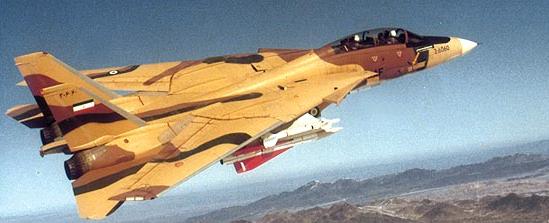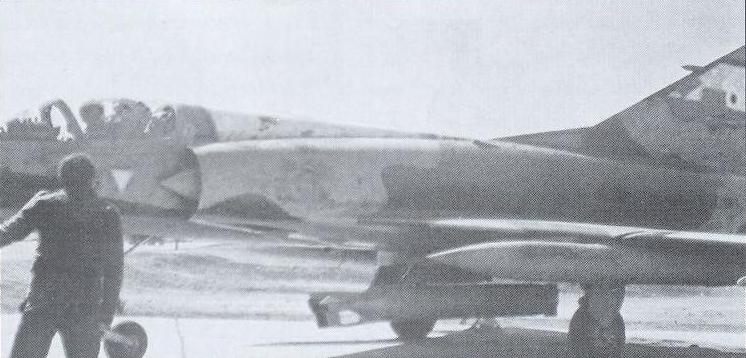One of the little known aspects of the Iran-Iraq war of 1980-1988 was the substantial role of mercenary Western, Pakistani and Egyptian pilots assisting the war efforts of the late Saddam Hussein’s Baathist regime. The ultimate aim of the latter was territorial expansion into Iran, notably Iran’s Khuzestan province, which has long been claimed by pan-Arabist ideology. The role of mercenary pilots was simple: to pilot Iraqi combat aircraft against Iranian civilian and military targets. To this day, the mainstream media has simply ignored this facet of history. There was also vast support from Arab and Muslim countries for Saddam Hussein’s war machine by the provision of vast finances and combat military personnel. So vast was this support that even South American countries such as Argentina, (former) Yugoslavia and Brazil were providing the Baathist regime with rocket launchers, bombs, combat vehicles, logistics and the building of military infrastructure. Not to be outdone, the Soviet Union and the Eastern bloc (notably the former East Germany or DDR) also supplied military equipment and personnel as well as pilots for combat aircraft and helicopters. Thanks to this vast international effort, which continued even after the end of the war in 1988, Saddam Hussein was in possession of a gigantic military machine. By 1990, the army of Baathist Iraq had been ranked as the world’s fourth largest military.
The above YouTube video “French Pilots Bombed Iran During Iran Iraq war” provides information seldom covered in the Western press. The program features interviews with Western officials who outline the role of Western powers in helping to plan and then logistically, economically and militarily support Saddam Hussein in an 8-year war resulting in tremendous loss of life and infrastructure damage to both Iran and Iraq (Source:Cyrus Dariush on YouTube).
Interestingly the above video also shows an official stating that in order to encourage Saddam to attack, he was being provided with:
” … trumped up information about Iran … we were filling Saddam’s head with nonsense … to encourage him to go in … it’s going to be a breeze…”.
The above video program also admits that Western arms manufacturers especially the French, looked to milk billions of Dollars in profits and hence viewed this war as an economic boom. An American official then notes in the above video that:
“The French began to fly air force missions for him … they were flying missions … the Pentagon confirmed it”.

Western Europe, especially France worked hard to train as many high-quality Iraqi airmen and ground crew as possible – above is a rare photo of Iraqi air force personnel posing in front of a French Navy Super Etendard sometime in the early 1980s; note European-looking male (back row, standing, 2nd from left), possibly a French military trainer and/or liaison to the Iraqis (there are other possible French personnel mixed in the above photo) (Source: مقالات نظامی). The Western effort to produce an all-Iraqi pilot force for Saddam’s air force proved impossible to achieve due to high losses to Iranian combat aircraft and ground-based missiles.
French authorities have yet to officially admit their role, however they have not denied their involvement either. Academic studies have also documented the role of the French and other nationalities cited earlier. This is because a large proportion of Saddam Hussein’s combat aircraft were, like the Mirage F1, of French origin which often required French personnel for maintenance. The other major component of Saddam Hussein’s air fleet was of Soviet (and to a lesser extent, Chinese) origin.

An Iraqi Air Force Mirage F1EQ (left – picture source: Ejection History website) and another Iraqi Mirage F1EQ which was shot down near Ahvaz on January 15, 1986 (right – picture source: Farzad Bishop) – the doomed Mirage exploded in mid-air when struck by a HAWK ground to air missile – note smoke still emanating from the wreckage.
The French however were not alone when it comes to foreign staffing of the Baathist Iraqi military machine, notably with respect to Saddam Hussein’s air fleet.

An Iranian F-14 Tomcat shows off a modified HAWK missile. The integration of the huge surface-to-air Hawk missile into the F-14 weapons system as an air-to-air missile was a surprising feat of ingenuity. When pictures of Iranian Tomcats carrying the HAWK were released for the first time, most Western media had been claiming for years that Iran’s F-14 fleet was grounded due to lack of spare parts and qualified technicians to maintain them. Those pictures provided evidence that the Iranians had been able to reverse engineer complex Western systems without foreign assistance (Picture source: Mehr News).
As noted by Kaveh Farrokh in his third text “Iran at War: 1500-1988-(ایران در جنگ (۱۹۸۸-۱۵۰۰-“:
“One of the least reported facets of the Iran-Iraq war was the crucial role played by foreign mercenary pilots. … East German and Russian pilots flew MIG-25s in deep raids inside Iran, with several highly experienced Russian pilots being shot down by Iranian F-14As. It is possible that some East German and/or Soviet pilots flew alongside western and Pakistani pilots in air raids against Kharq Island. Other examples of foreign pilots include Egyptians who led a number of air strikes against Iranian forces during the latter’s Fao operations in 1986 and French pilots who flew with the Iraqis …Iraq had lost many experienced pilots which took time to replace. Despite having achieved an inventory of over 500 aircraft by 1987, Iraq simply did not have enough pilots to fly them. The situation worsened after Iran’s Karbala 5 offensive which shot down large numbers of Iraqi aircraft. After that, the Iraqi air force was left with just 100 qualified pilots, with only half of these being fit for dangerous missions. Had it not been for foreign expertise, Iraq’s vast inventory of aircraft could not have generated such a large number of sorties in 1988” (Farrokh, 2011, page 401 – references and footnotes for the above citations are available in the textbook for readers interest in further studies of this subject).

Iran’s Sattar-1 laser-guided air-to-ground missile designed after the Iran-Iraq war. This is believed to have borrowed some features from the Phoenix air to air missile. The Phoenix downed large numbers of Iraqi air force aircraft during the Iran-Iraq war, including those flown by mercenary pilots (Picture source: The Arkenstone).
Despite pro-Saddam press reports in the Western and international media in the 1980s, the Iraqi force had serious challenges during the Iran-Iraq war. A key problem was that despite the best efforts of the West, the Soviet Bloc, Egypt and Pakistan, Iraq continued to suffer high losses in aircraft due to Iranian ground-based missiles and (despite maintenance challenges) combat aircraft. As noted previously, high combat losses also meant that Iraq suffered from a chronic shortage of trained combat pilots, a problem that remained in place until the end of the war in 1988.
Cooper and Bishop (2000, pages 222, 233 and footnote 371) have identified numbers of Saddam Hussein’s mercenary pilots by the latter years of the Iran-Iraq war. Just a handful of these are:
- Iqbal Zakiollah (Pakistan)
- Maxwell von Rosen (Belgium)
- Russell Cargill (South Africa)
- Shams Alfahi (Pakistan)
- Gustav Miller (Belgium)
The multi aircraft air raids against Iranian targets in the Persian Gulf at Sirri Island (August 12, 1986) and Larak (November 25, 1986) provides some perspective on how dependent the Baathist Iraqi war effort had become on foreign expertise and support by this time during the war:
- Sirri Island (August 12, 1986): 23 of the “Iraqi” jets were actually piloted by pilots from West Germany, Pakistan, Belgium, New Zealand, etc. Only two of the pilots at the air raid against Sirri island were of Iraqi nationality.
- Larak (November 25, 1986): the leader of this air raid was Max von Rosen (Belgium).
Western and international media reports however had become virtual mouthpieces for Saddam Hussein’s pan-Arabist propaganda at the time. Several Western reports (re) broadcast Baathist regime propaganda photos of Iraqi air operations, but carefully avoided any mention of Western and other affiliated pilots serving Saddam Hussein. Thanks in part to nearly a decade of (Western promoted) propaganda, many Western analysts had come to believe in vast exaggerations of Saddam Hussein’s military capabilities. It is possible that these same Western media reports inadvertently led Saddam to incorrectly conclude that his air force (and military in general) were more powerful than they actually were. Only a handful of policy advisors, military experts and academics were aware of the actual situation. Perhaps Saddam and his advisors may have over-estimated their capabilities of being able to repel US and Western counter-strikes when Iraqi forces annexed Kuwait in 1990.

WARNING GRAPHIC IMAGE – An Iraqi Mig-23 just before it was shot down by Iranian forces (left) and the remains of its unfortunate Iraqi pilot after the plane crashed (right) (Picture sources:Military Photos Net). Iraqi Mig-23 aircraft suffered heavy losses at the hands of Iranian F-14As – despite much Soviet-East Bloc, French-Western, Pakistani and some Indian assistance, right up to the last days of the war (Picture Source: AviationLive.org).
Despite the role of Western, Pakistani, etc. pilots, the Iraqi air force was unable to suppress Iran’s air defenses. Below are a number of excerpts by various editions of the British Air Forces Monthly journal:
“Despite many reports to the contrary, the type [F-14A] was instrumental in defending Iranian air space…it used all its weapons to near perfection shooting down any type of combat aircraft in the Iraqi inventory…(2002, 177, pp.30)…the Tomcat shot down at least 95 Iraqi combat aircraft, at least thirty of which were confirmed as AIM-54A Phoenix kills…seven and ten more were listed as probable kills… (2002, 169, pp.64)”

Saddam’s Flying Pharaohs: An Egyptian Mirage 5-SDE on an Iraqi airfield partaking in special combat (electronic warfare) operations against Iranian forces at Fao in 1986. Note that the Egyptian markings have been removed (Picture Source: Cooper & Bishop, 2003, page 243).



